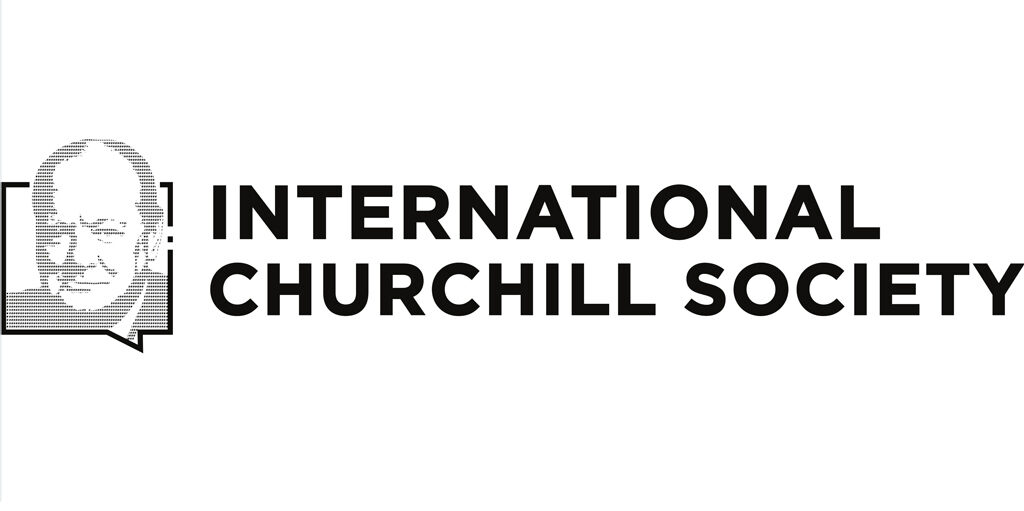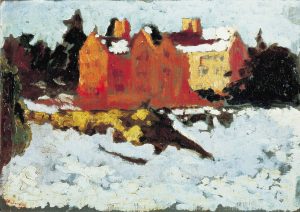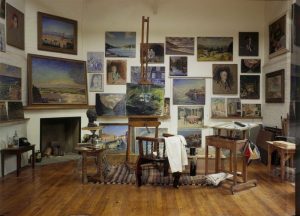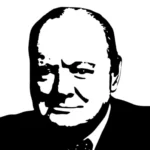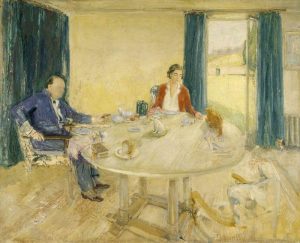
Bulletin #105 - Mar 2017
Leading Churchill Myths: Chartwell
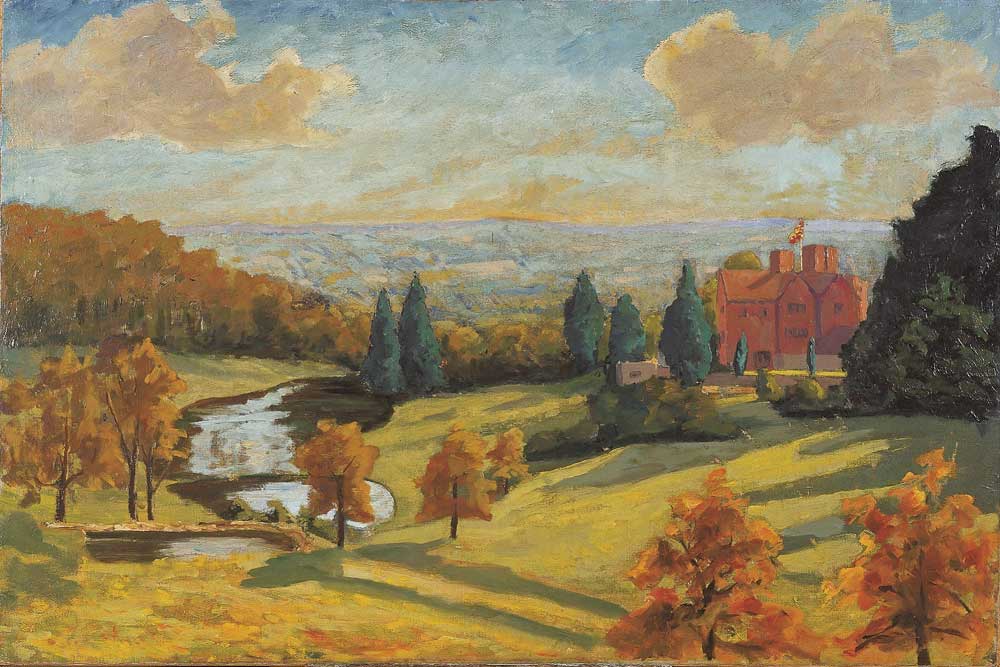
View of Chartwell by Winston S. Churchill, circa 1938
August 24, 2021
Chartwell “Manor”
In the latest issue of Finest Hour, STEFAN BUCKZACKI examines a common misconception about Chartwell.
A trap that people often fall into is to refer to Winston Churchill’s beloved country estate in Kent as “Chartwell Manor.” Even Mary Soames in her wonderful memoir A Daughter’s Tale made this error. It is true the house was informally, but only ever informally, called Chartwell Manor around the time Mary was born and her father bought the estate in 1922—simply because it was a big and imposing residence. But it was not then and never had been a manor house, and it is quite incorrect and careless to use this as its proper name. Churchill himself never appears to have referred to his house as a manor and simply used “Chartwell” on his stationery. Most of all the National Trust, as the present owner, does not use the term manor because it is legally wrong.
Parts of the house are mediaeval, and down the centuries it was called Well Street or Wellstreet; or occasionally Well Place. It was renamed Chartwell by John Campbell Colquhoun, who bought the estate in the nineteenth century, and the name first appears in the 1851 Kent census. The name was taken from the spring called the Chart Well that arises on the site. The name Chart in the Old English sense of rough ground or “rough common overgrown with gorse, broom, bracken” occurs throughout the Weald and is common as a place name in Kent. The Campbell Colquhouns acquired more and more land, and, by the time Churchill bought the property in 1921, it had all become The Chartwell Estate.
There is however an entertaining adjunct to this story. In 1934, it was suggested to Churchill that he might be interested in purchasing the Manorial Rights of the adjacent property of Windmill Hill from the then owner Captain John Warde of nearby Squerryes Court. As Lord of the Manor, he would thereby acquire several ancient rights, and the land agents wrote to him saying: “In our opinion, there is a certain ‘pride of ownership’ to an owner of ‘Chartwell’ with such a beautiful house, and the acquisition of the control of the Manorial Rights must be an attraction. Possibly if you purchased, a ‘Manor of Chartwell’ might be created.…” [CHAR 1/393C/377, 10 Feb 1934] But Churchill did not succumb to their overtures, and it never happened.

2025 International Churchill Conference
Stefan Buczacki is the author of Churchill and Chartwell: The Untold Story of Churchill’s House and Gardens (2007). You can receive Finest Hour by joining the International Churchill Society. Simply follow the link below.
Image:
Winston Churchill’s View of Chartwell, c. 1938
Oil on canvas, 24” x 36”
Chartwell, The Churchill Collection, National Trust, Coombs 286
© Churchill Heritage Ltd.
Subscribe
WANT MORE?
Get the Churchill Bulletin delivered to your inbox once a month.
